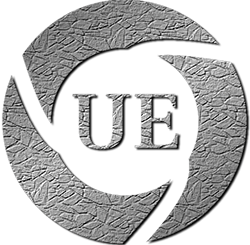Welcome to the mirror for Ultimate Edition
Ultimate Edition 5.8 is here
Review written by Daniel Pop-Silaghi, Softpedia
And so it is. TheeMahn announced the new version a short time ago and we couldn't miss the chance to give you some feedback on how it looks, feels and performs. Ultimate Edition is available as a 2.0 GB DVD ISO and can be run on both 32- and 64-bit platforms.
After burning the image to a disk and restarted the PC, the impressive bootsplash artwork was already preparing me for the visual feat that Ultimate Edition generously provided. The system booted fairly quick and the Live desktop was up and running soon after. The only icon on the desktop was the "Install" one and, since we have a machine just for testing, I didn't hesitate and double-clicked it. Still, if you want to play around on the Live DVD, there's no reason not to do that, as it is as responsive as it can get.
Unsurprisingly, the installation process is not a bit different from Ubuntu's, so it's an easy task. Of course, don't expect the same ten-minute install, as this distribution comes loaded with extra software. Around 20-25 minutes should be enough for the DVD to do its job.
After completing the installation and restarting the computer, pressing ESC to show the boot menu will give you not one, but two available kernels to choose from: 2.6.28-13 (default) and 2.6.28-11. A pretty handy solution for various hardware incompatibilities that might occur. Anyway, the default worked just fine on our machine, so I was presented with the beautiful login screen that, to my surprise, doesn't resemble that of Ubuntu at all. Instead, it's much more similar to the PCLinuxOS one, for example.
The Ultimate Edition's theme looks stunning. It's clear that it wants to be in the spotlight. It's not your simple, average-looking theme. With glossy blacks and gorgeous blue colors, it still manages to not fall on the too-much-bling side and hurt your eyes. There's not one element left untouched. The cursor is big, shiny and spinning. When the system is "busy," it transforms into a globe that displays the Ultimate Edition's initials. One downside is the fact that the animation can be a bit choppy if you don't have the graphics driver initialized.
Immediately after logging in, the GNOME Do window popped up. If you don't know what GNOME Do is, let me tell you that it is an extremely versatile application for launching programs, controlling your music player, and much more. Though I'm very fond of this program, it would have been best if it didn't pop up automatically at startup. Except for the theme, the interface layout is GNOME's default. Speaking of themes, entering the Appearance Preferences will sweep you off your feet with the huge selection of extra alternatives. You will also notice a message saying that, "The current theme suggests a font." Click on it and the font will be changed from the default "Sans" to "Liberation Sans."
There are some applications, such as the included CompizConfig Settings Manager, that use a dark blue font on some menus. Add that to the black background applied by the default theme and you will have to squint in order to read the text. Fortunately, you have plenty of other choices.
Ultimate Edition 3.5 comes with a very nice software collection, especially for multimedia purposes. But let's look first in the Accessories menu. Avant Window Navigator is at the top of the list, so if you're a Dock fan, you're all set. The next item that gets your attention is "Dynamic wallpaper." Sounds interesting, doesn't it? Opening it will place an icon in the tray from where you can configure a location and choose out of four "themes". Having done that, the wallpaper will automatically change depending on the current weather and time of day. The wallpapers aren't all that great but, if your room's window is too far away, they provide a great way to check on the weather. Shutter, Guake Terminal, gDesklets are other nice, useful apps.
Moving on to the Graphics section, Blender, Fotoxx or Drawpile are some of the additions that provide you with hours of artful time-wasting or, why not, work. For all that is Internet-related, Ultimate Edition gives you aMSN, Google Gadgets, Kopete, kFlickr, Giver, Vuze, FrostWire, and more. For office tasks, besides the ubiquitous OpenOffice suite, you get GnuCash and HomeBank. In the Programming area, there are a lot of IDEs, editors, diff viewers, and more.
To give you a sense of the number of multimedia apps, let me tell you that the Sound & Video menu has to be scrolled on our 1280x1024 display. Just to name a few, they include Amarok, Audacious, DVD Styler, gtk-recordMyDesktop, Miro, LIVES, sound converters, MP3 splitters and Audacity. Of course, Ultimate Edition also comes with all the necessary video and audio codecs pre-installed. Last but not least, Ubuntu Tweak, dvdisaster and Wine + Wine-Doors are a bunch of extremely useful tools that you'll like. I also wanted to check Ultamatix, but unfortunately it couldn't detect the Internet connection, thus couldn't start.
We have dumps for all hardware and software exams. Tutorial for A+ certification is available with books.
E-book of MCTS 70-536 can be downloaded from our website and with complete MCTS certification exam details.
Click here to go to their official website.
All donations go towards the expansion project of Linux Freedom

